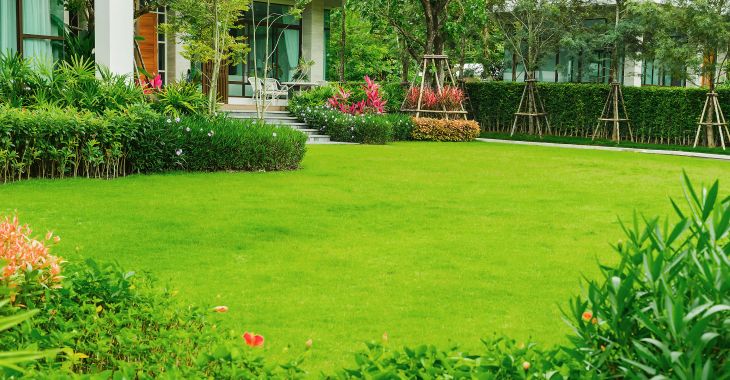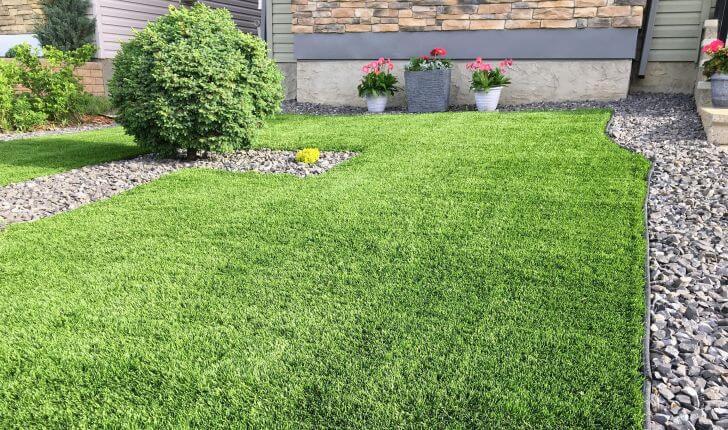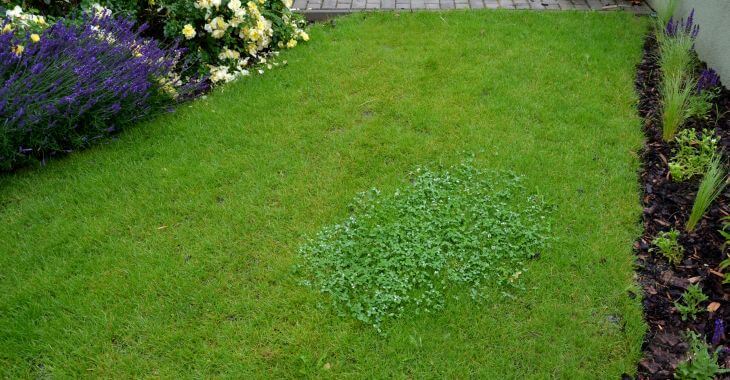What is Hydroseeding and How Does It Work?

If you have ever tried to grow grass from seed, you know it is not as easy as it sounds. Sprinkling grass seed on soil is not all it takes to create a thick patch of grass, much less a full-size lawn, golf course or park. Hydroseeding for lawns is a type of grass planting that combines science and landscaping to make it simpler to plant large areas of grass with better efficiency and effectiveness.
What is Hydroseeding for Lawns?
To grow grass, you need to consider the different elements required to make grass grow. You need grass seed, water and nutrient-rich soil that is exposed to the sun at minimum to begin the germination and grass-growing process. Hydroseeding takes the basic elements of sowing grass seeds and combines them into a process that is effective for planting grass quickly.
In simple terms, hydroseeding uses a liquid combination of mulch, seed, fertilize and seeds that is sprayed onto prepared soil. While the most common use of hydroseeding is to plant grass, it can be used in other planting applications. This slurry of nutrients, water and seeds combines several steps of planting grass into one process, saving time and money. When done correctly, it can speed up the process of germinating grass from seed for lawns and larger grass planting projects.
Science Behind Hydroseeding
There is more to hydroseeding than just stirring a few ingredients together and spraying it over soil. For the best results, you need to test the soil and find the right combination of nutrients to add with the best choice of seed. Then, you need the correct application option – there are different types of hydroseeding equipment to deliver the slurry to the soil, from small tanks with hoses to helicopters releasing it over acres of land.
The hydroseeding slurry should be customized to the project – for lawns, a landscaper can test the soil to determine the right nutrient combination. Hydroseeding formulas will also contain biostimulants, tackifiers, lime and polymers that all help the seed to germinate quickly. The right type of grass seed for the region and type of use is also important.
Benefits of Using Hydroseeding
Hydroseeding was created as an erosion solution – adding grass to ditches near roadways, on slopes and other areas can reduce erosion by stabilizing the top soil with an integrated root system. Hydroseeding is perfect for areas that would be difficult to plant seed conventionally, like hills and slopes. Some of the other benefits of hydroseeding include:
- Quicker germination
- One application
- Slurry can be customized to the soil
- Slurry is dyed to ensure full coverage of planted area
Hydroseeding is used commercially for planting grass and other species over large areas, but it is also useful for residential lawns. If you are starting a new lawn from scratch, hydroseeding can be an option to fast-start your new grass in one application, but the soil needs to be properly prepared before planting.
It is important that the soil in the lawn area is ready for planting – the soil should be tilled and loosened to allow for easy grass root formation from the seeds. There are also special preparations for hydroseeding new buildings to ensure the soil is graded and sloped away from the foundation. Hiring a landscape professional that specializes in the hydroseeding process is recommended for the best results.
Alternatives to Hydroseeding for New Lawns
Hydroseeding can be done as a DIY project, but it does require the right equipment and knowledge for the best results. For small lawns, it may be better to either hire a landscaping service that offers hydroseeding or other alternatives. Planting new seed with a spreader and spending the time to add fertilizer, mulch and weed control manually is always an option. If you want an instant lawn, you can choose sod installation. Your landscaping professional can help you determine the best option for your size of lawn and budget.

When Is the Best Time to Hydroseed?
If you want to plant a new lawn, hillside or ditches by hydroseeding, you want to do it at the right time of year. Like most planting, spring is the best time to hydroseed. How early depends on the region where you live – in cooler climates it will need to wait until the top soil reaches growing temperatures. Hydroseeding should be completed as early in the spring as possible to allow the grass seed to germinate and begin growing strong roots before hot weather puts stress on the new blades of grass.
Hydroseeding can be a quick and effective way to plant large lawns and commercial areas. Whether you want a healthy new lawn or want to protect a hillside from erosion, hydroseeding may be the best option for your next grass-planting project. To learn more about hydroseeding for lawns and how to prepare for your planting, contact a landscaping professional that specializes in this service.
